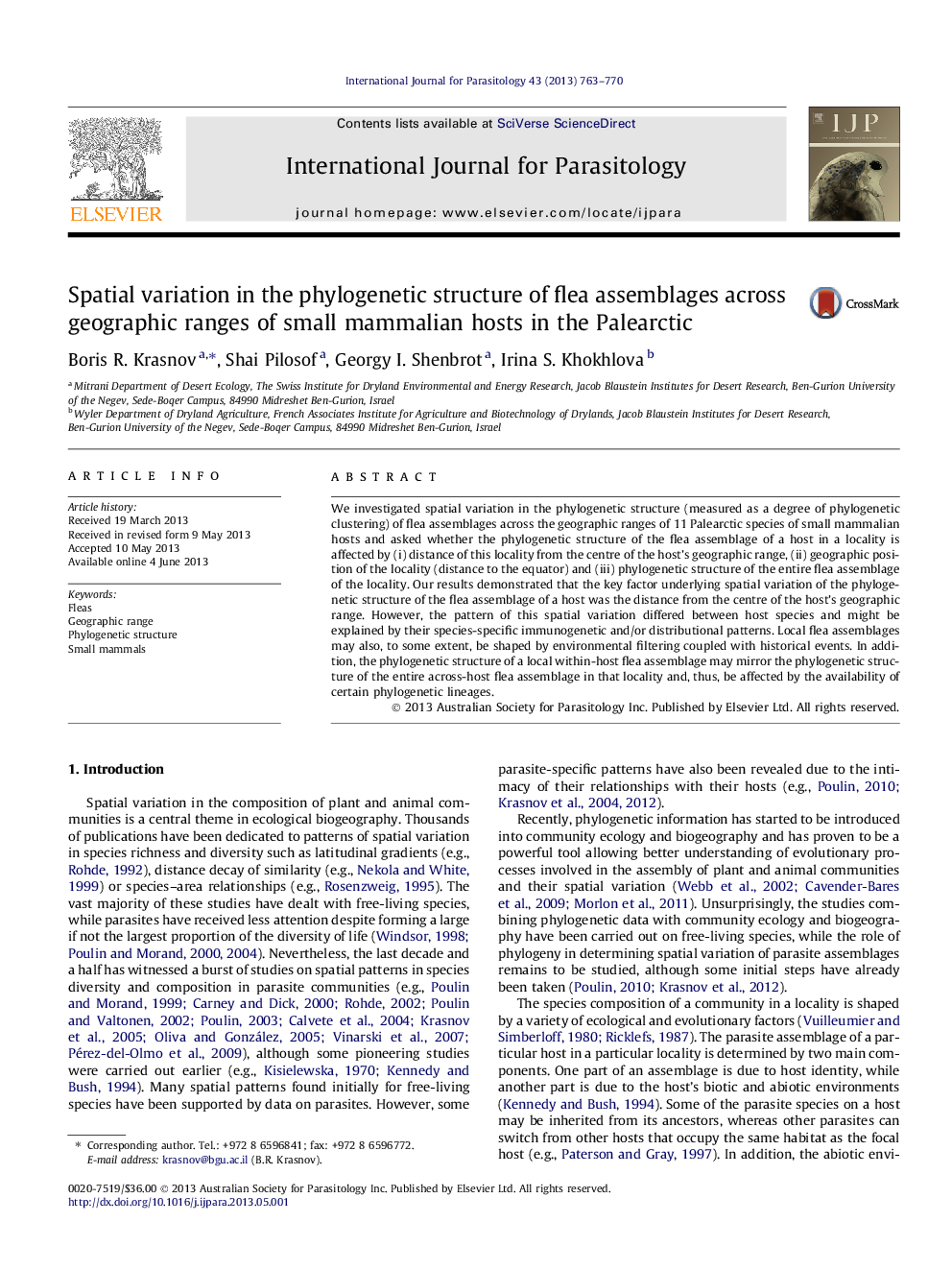| Article ID | Journal | Published Year | Pages | File Type |
|---|---|---|---|---|
| 2436069 | International Journal for Parasitology | 2013 | 8 Pages |
•Phylogenetic structures of flea assemblages differ between core and peripheral populations.•The pattern of this variation differed between host species.•Flea assemblages may be shaped by environmental filtering coupled with historical events.•Phylogenetic structure of a within-host assemblage mirrors that of the across-host assemblage.
We investigated spatial variation in the phylogenetic structure (measured as a degree of phylogenetic clustering) of flea assemblages across the geographic ranges of 11 Palearctic species of small mammalian hosts and asked whether the phylogenetic structure of the flea assemblage of a host in a locality is affected by (i) distance of this locality from the centre of the host’s geographic range, (ii) geographic position of the locality (distance to the equator) and (iii) phylogenetic structure of the entire flea assemblage of the locality. Our results demonstrated that the key factor underlying spatial variation of the phylogenetic structure of the flea assemblage of a host was the distance from the centre of the host’s geographic range. However, the pattern of this spatial variation differed between host species and might be explained by their species-specific immunogenetic and/or distributional patterns. Local flea assemblages may also, to some extent, be shaped by environmental filtering coupled with historical events. In addition, the phylogenetic structure of a local within-host flea assemblage may mirror the phylogenetic structure of the entire across-host flea assemblage in that locality and, thus, be affected by the availability of certain phylogenetic lineages.
Graphical abstractFigure optionsDownload full-size imageDownload high-quality image (97 K)Download as PowerPoint slide
